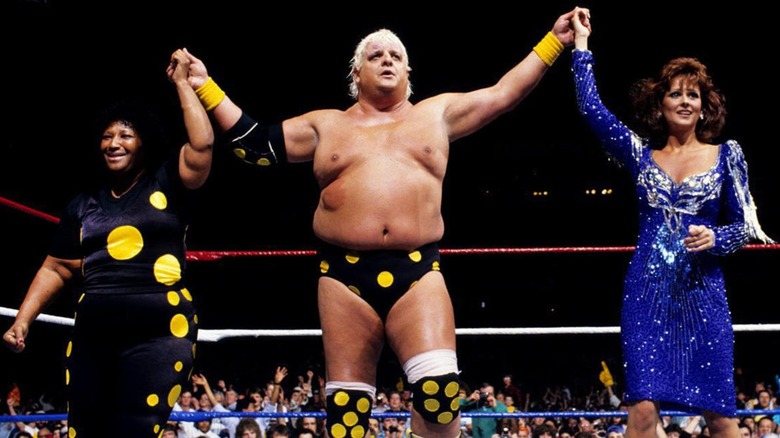Eric Bischoff Explains Why WWE Hall Of Famer Dusty Rhodes Was A 'Visionary'
In 1993, WCW began taping its syndicated shows "WCW WorldWide," "WCW Pro," and "WCW Prime" at the world-renowned Disney/MGM Studios. Eric Bischoff, who had taken over as WCW's executive producer, was determined to change the aesthetic of WCW's programming by moving away from the old-school Southern arenas to the bright lights of Florida.
Bischoff received a lot of pushback from the dirtsheets and even his colleagues in WCW for his radical ideas, as revealed in his "Controversy Creates Cash" autobiography. However, Dusty Rhodes was the only man who believed in Bischoff's vision, something the former WCW President reiterated on his "83 Weeks" podcast recently.
"Even before we shot our first show, everything I read about [the idea] was negative," Bischoff said. "It was so dark. Everybody predicted the end of the world, and 'Bischoff doesn't know what he's doing' and 'he's a TV producer, not a wrestling guy.' That became the narrative and it filtered down to the wrestling roster ... but once Bill Shaw came in and supported the idea, Dusty jumped on board. Dusty got very supportive, very quickly.
"Dusty was a visionary," Bischoff continued. "He didn't see wrestling the same way everyone else that came before him ... he didn't see wrestling the way Ole Anderson saw it. Dusty was much more of a visionary, Ole was more in the vein of Bill Watts or Verne Gagne — 'Let's go back and do it the way we did in the '70s.' The problem is the television industry had changed so much."
As part of the changes, WCW placed the ring atop a rotating platform that expanded the ringside area and increased the distance between the ring and the audience. Furthermore, Bischoff's vision was to attract non-wrestling fans visiting the theme park to watch the shows, offering them free passes and merchandise with hopes of luring them in.
